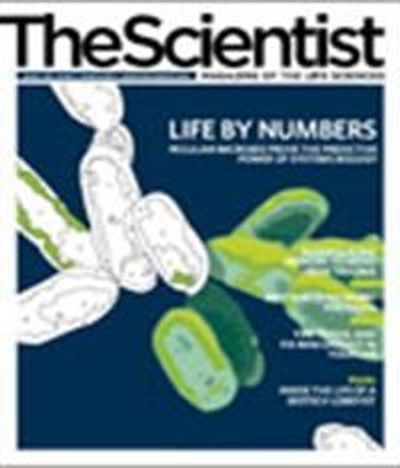
Broken DNA—be it a gap, a nick or a double strand break —is a hallmark of cancerous or aging cells. But once key kinases and their regulators detect DNA damage, a molecular cascade swings into action, triggering posttranscriptional changes in proteins that eventually spur enzymes, such as ligases, to repair the damage and facilitate further replication. Until recently, little was known about exactly how mammalian cells sense DNA damage and coordinate these responses and which molecules act to set things right.
By the mid-1990s, researchers had explored the DNA damage response (DDR) using simple model organisms, such as yeast, and found that DDR was a signal transduction pathway with two kinases, namely ATM (ataxia telangiectasia mutated) and ATR (ATM and Rad3-related), orchestrating a suite of phosphorylation events. About 100...
Taking the ball
Upon publication of the Hot Paper, researchers first set out to verify that the specific proteins turned up by the screen were in fact ATM and ATR phosphorylation substrates. "Through work in a large number of labs, it's now clear that this analysis was extremely accurate," says Cambridge University molecular biologist Steve Jackson.
One of the paper's big surprises, says Massachusetts Institute of Technology biochemist Michael Yaffe, was that proteins, such as splicing factors, involved in RNA posttranscriptional modification seemed to be phosphorylated in response to DNA damage, in addition to proteins involved in DNA replication, recombination, cell cycle management, and gene expression. "I don't think anybody expected those to come up," he says. Researchers in Canada have recently shown that an RNA helicase helps repair damaged genomes by clearing defective RNA at the site of double strand breaks.
Now researchers are seeking to describe the conformational and molecular changes that occur in conjunction with and downstream of phosphorylation events following DNA damage. Yaffe's lab, for example, is focusing on three kinases—Chk1, Chk2, and Mk2—that are downstream from ATM and ATR and serve as "checkpoint kinases" to advance the DNA damage response as it ripples through the cell. Yaffe says that his group is using a systems biology approach, including mass spectrometry and RNA interference, to characterize the mechanisms at play in DDR and to map out the intricacies of DDR response networks.
Cimprich's lab is currently doing a genome-wide siRNA screen to search for specific genes that may contribute to DNA damage. By overlapping her genetic data with Elledge and Gygi's dataset of protein substrates, she hopes to identify new mediators of DNA damage. Similarly, Yaffe's group is cross-correlating RNAi screens, which indicate a phenotypic response in proteins involved in genetic disruption, with the Harvard group's data to link specific kinases to their substrates and describe the DDR phosphorylation cascade in more detail.
In the clinic
There are hints that fully understanding the DDR process will have clinical relevance. For example, Elledge's screen implicated several proteins in the insulin-IGF-1 signaling pathway, suggesting that DNA damage could play a role in age-related metabolic disorders or in diabetes. A team from South Dakota University recently found that decreased ATM expression may lead to insulin resistance in rats fed a high fat diet.
"DNA damage seems to go hand-in-hand with premature aging," Cimprich says, and ATM and ATR deficient mice have been shown to prematurely age. Her group continues to pursue individual genes behind some of the proteins that the Hot Paper identified.
"There is the potential that some of these proteins that are phosphorylated could turn out to be drug targets in their own right," says Jackson. In addition, particular proteins that are phosphorylated in response to DNA damage could be used as biomarkers to detect the onset of cancer or other maladies tied to malfunctioning genetic material, Jackson adds. Elledge's own lab, for example, has already altered proteins in the Fanconi anemia pathway, which turned up in his proteomic screen, to treat the disease.
But before clinical applications appear there is much still to learn about how cells mitigate DNA damage. Phosphorylation events, for example, are only one flavor of posttranscriptional modification, Jackson says. DNA damage also triggers protein ubiquitylation, acetylation and sumoylation. "We might, as yet, be looking at the tip of the iceberg."
References
1. S. Matsuoka, et al., "ATM and ATR substrate analysis reveals extensive protein networks responsive to DNA damage," Science, 316:1160–6, 2007. (Cited in 138 papers) 2. L. Li, et al., "A role for DEAD box 1 at DNA double-strand breaks," Mol Cell Bio, 26:6413–25, 2008. 3. R. Linding, et al., "Systematic discovery of in vivo phosphorylation networks," Cell, 129:1415–26, 2007. 4. M. Halaby, et al., "ATM protein kinase mediates full activation of Akt and regulates glucose transporter 4 translocation by insulin in muscle cells," Cell Sig, 20:1555–63, 2008. 5. M. Ishiai, et al., "FANCI phosphorylation functions as a molecular switch to turn on the Fanconi anemia pathway," Nat Struc Mol Bio, 15:1138–46, 2008.Interested in reading more?

